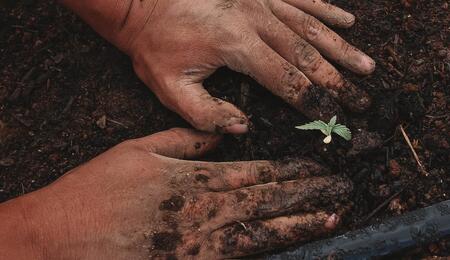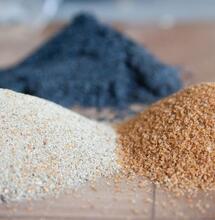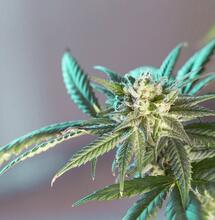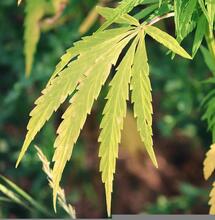How Much You Know Your Phosphorus?

Phosphorus is an essential ingredient for cannabis plants to thrive. According to some research, phosphorus resources will deplete from the earth within a century.
Without Phosphorus, crops will diminish. A big portion of the energy each plant receives from the sun gets stored as Phosphorus. Plants use this resource to conduct an array of metabolic processes, including photosynthesis.
In marijuana plants, Phosphorus is useful during all stages of growth. The element supports seed germination, root formation, then the formation of the entire constitution of the plant, and finally, it supports the plant when it enters flowering stage.
Phosphorus is what gives health and strength to the marijuana plant, and it's effectively part of its DNA. In fact, it's the backbone of DNA and the P in ATP, the molecule that circulates energy around cells.
A nonmetallic chemical element of the nitrogen family, Phosphorus (P) is an essential nutrient for any other crop that grows on Earth. So, it's not only the joint you smoke thanks to Phosphorus — but it's also the food you eat.
What are the main challenges with Phosphorus today?
Phosphorus forms naturally in the soil. For centuries, farmers have added extra of it to their plots of land to boost yields. Today's farmers, however, look for ways to reduce the use of Phosphorus. One reason is because overuse of Phosphorus has led to pollution of water. And the other is that good Phosphorus resources are running out.
Well, it's not like you wake up one day and there is no more Phosphorus solution available for your small cannabis garden. However, Earth's commercial and affordable Phosphorus reserves are projected to run out within 50-100 years. Peak Phosphorus is to be reached in approximately 2030, according to the same projections. On the more optimistic side, there are those soil experts that believe Phosphorus supplies will last for several centuries into the future. Which makes the answer to our planet's Phosphorus reserves not so definite and clear.
Which are the biggest producers of Phosphorus?
The United States, China, and Morocco are the world's biggest miners of Phosphorus. When the known reserves of Phosphorus run out at some point in the future, geologists in these countries know of other deposits, but they are pessimistic about this. One thing is that not all Phosphorus is easy to access. Another is that some of those resources of the future contain less of the nutrient. It's an issue that may well cause the price of Phosphorus to rise and disrupt markets from the US to China. For growers, it means harder access to fertilizers. For people, it might mean a lack of access to food.
How did farmers begin using Phosphorus?
Farmers have been feeding crops with Phosphorus for millennia. In the beginning, people used manure and human waste as fertilizer. During the 19th-century farmers discovered phosphorus-rich bones and rocks which became the new resource of the naturally-occurring element.
The process of treating the new mineral forms of phosphorus with acid was patented in 1842 by Oxford University dropout John Bennet Lawes. This became the world's first human-made fertilizer, making the nutrient more accessible to plants.
What is legacy Phosphorus?
It's the accumulation of Phosphorus in the soil. Legacy Phosphorus is present in places with long histories of phosphorus overuse such as the U.K. or Canada.
Farmers have experimented to see if crops can thrive in places rich with Phosphorus legacy without administrating more of it. Perhaps unsurprisingly, they have found places where crops can thrive for dozens of years on the stores built up in the ground. According to National Geographic, the most extreme example comes from Saskatchewan, where researchers haven't poured any Phosphorus into plots of wheat since 1995. A quarter of a century later they still haven't noticed any problems.
Do plants adapt to the scarcity of Phosphorus?
Plants do adapt to Phosphorus depletion in nature. There are known examples from the wildlife where plants develop new means of how to access Phosphorus that's deeper in the ground or generally less accessible.
Some plant species are known to have evolved extensive roots that search out Phosphorus. Others unleash specific chemicals to unlock the nutrient from the soil. Unfortunately, most commercial crops don't have much of these abilities. Genetically engineered crops are typically designed for well-fertilized soils where the plant has all nutrients almost instantaneously. These plants do not need to take the extra effort to unlock hidden deposits of Phosphorus in the soil. This issue comes down to breeders who have, traditionally, in a world abundant with resources, opted for varieties that grow fast rather than varieties that are better at self-nourishing. The result is pretty lazy plants when it comes to nutrients search.
How to recognize Phosphorus deficiency in cannabis plants?
When marijuana plants fail to access proper amounts of Phosphorus, it leads to a deficiency. Knowing how Phosphorus moves in the different parts of the cannabis plant can help growers identify problems early on.
Phosphorus is a mobile nutrient and it moves to areas such as the youngest leaves where there's more "plant activity." As this element depletes from older leaves, they do turn yellow. The oldest and lowest leaves of the marijuana plant act as nutrient reservoirs, and this area of the plant is the first the plant will use when it needs Phosphorus.
When more leaves on the cannabis plant begin to turn yellow, it means the Phosphorus deficiency is in an advanced stage. If not treated, the yellow leaves will further deteriorate and fall from the plant, but by then the deficiency will be noticeable on other parts of the plant too. If a deficiency is not addressed by the grower, there follows rapid defoliation. The plant loses all leaves, stops performing key functions, and ultimately dies. If not from the deficiency itself, then from foreign organisms such as pests, fungi, and other microbes that are easy to multiply on vulnerable plants.
How to treat Phosphorus deficiency?
The first step is to check the pH of the soil where the cannabis plants are growing. The pH value must be in the range of 5.5-6.5. If a hydroponic system is used, the acceptable pH range is between 5.5. and 6.2.
The next step is to flush the roots with a stable pH according to the growth stage and then water with a balanced fertilizer rich in Phosphorus.
Growers can use both organic or mineral fertilizer to solve the nutrient lockout. The process will correct the excess of other elements like zinc and iron that usually block the plant's uptake and processing of Phosphorus.
How to treat Phosphorus excess?
There is Phosphorus deficiency, and there's also Phosphorus excess. Excess can lead to a significant lockout of other nutrients the cannabis plant also dearly needs to thrive. These include calcium, copper, magnesium, iron, or zinc.
A common practice to address Phosphorus excess is to flush out the roots of the plant with an excess amount of water, more so than the container where you grow the plant can hold. Growers can also use products that dissolve salts to ease the flushing of the roots. Depending on the life stage of the plant, growers should always adjust the pH level as well.







